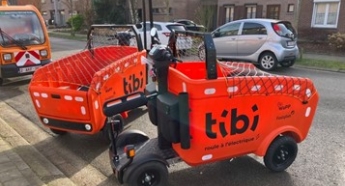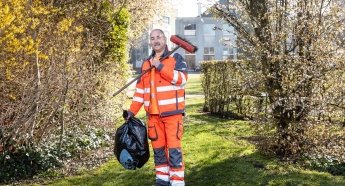The first series of pilot projects targeting litter in which Fost Plus worked with local authorities has largely been completed. Three main conclusions can be drawn from the projects. The idea is to analyse the results further in order to come up with a scalable on-the-ground approach.
No fewer than 25 targeted actions against litter were set up in 2024. The eight cities and municipalities involved – or their intermunicipal organisations – looked at what was needed to step up their operations and achieve effective results. These are the findings.
1. Litter data from cameras that is processed with artificial intelligence is just as reliable as manual counts, but has the big advantage that interventions can be made almost in real time.
2. New infrastructure such as cigarette butt bins, seasonal litter bins or special sweeping vehicles give a boost to capabilities on the ground, but what’s needed really depends on the specific local context.
3. Making cleaning efforts and personnel very visible on the street both improves perceptions of a clean environment and makes people less likely to litter.
The background: reducing the impact of plastic products on the environment
The European Single Use Plastics Directive states that producers of certain types of plastic products and packaging are responsible for the costs of cleaning up and managing the litter they cause, including raising awareness. Although this directive dates back to 2019, we are still awaiting clear information about the concrete form this responsibility for litter will take in Belgium. It has the ambition to go a step further than what Europe imposes: it has in its sights not just plastic products and packaging, but cans and cigarette butts among other things.
He who pays the piper calls the tune?
The additional financial resources for local authorities should in principle improve their ability to take efficient action against litter, which should help to keep public spaces tidier. This also represents an opportunity for the businesses involved to help construct a solution. This makes a lot of sense, as they don’t just want to be presented with the bill. Instead, they want to help determine how the resources can be used as efficiently as possible to achieve an optimal outcome: less litter and more recycling. That is not only smart from a financial point of view. It’s logical, too. No brand wants to see its packaging end up as litter.

Although the Belgian legal framework is still pending, pilot projects have already been set up with three intermunicipal organisations and two municipalities. This enables us to test the approach in different contexts that reflect the diversity of the Belgian landscape.
Cooperation on the front line
Businesses’ involvement in the fight against litter is not new. Since 2016, through Fost Plus, companies have been financing Mooimakers in Flanders, Be WaPP in Wallonia and the collaboration with Bruxelles-Propreté.
Fost Plus has now also developed a framework for a collaborative model with cities and municipalities in connection with the new producer responsibility. Although the Belgian legal framework in the form of the Interregional Cooperation Agreement is still pending, pilot projects have already been set up with three intermunicipal organisations (IVAGO for the city of Ghent, TIBI in Charleroi and IDELUX for the municipalities of Bouillon, Malmedy, Hotton and Tintigny) and two municipalities (Erpe-Mere and Aalter). This enables us to test the approach in different contexts that reflect the diversity of the Belgian landscape. The collaboration is a two-way street: we gain a clearer picture of the current approach to litter in different settings and, together with our partners, initiate targeted actions to tackle specific local problems.
The aim is to use the lessons from the pilot projects to develop an effective and scalable approach for local authorities, tailored to the needs of the different settings – because central cities, tourist attractions and rural areas require different approaches.
Next steps
The aim of the new Interregional Cooperation Agreement is that cities and municipalities can choose to join this operational path, receiving both resources and practical support. Alternatively, municipalities with sufficient expertise in-house can opt simply to receive the funding determined by a distribution formula. They would then be responsible for the implementation of action points, reporting, and achieving the necessary results themselves. At present, we are still waiting for the final provisions.

